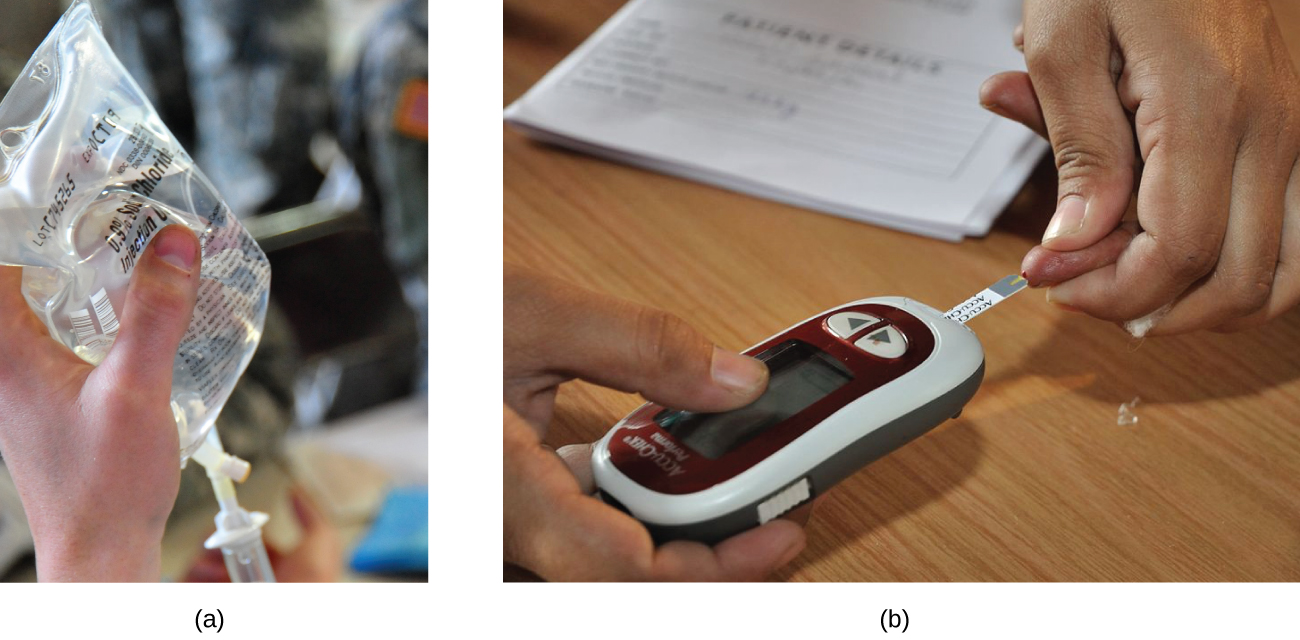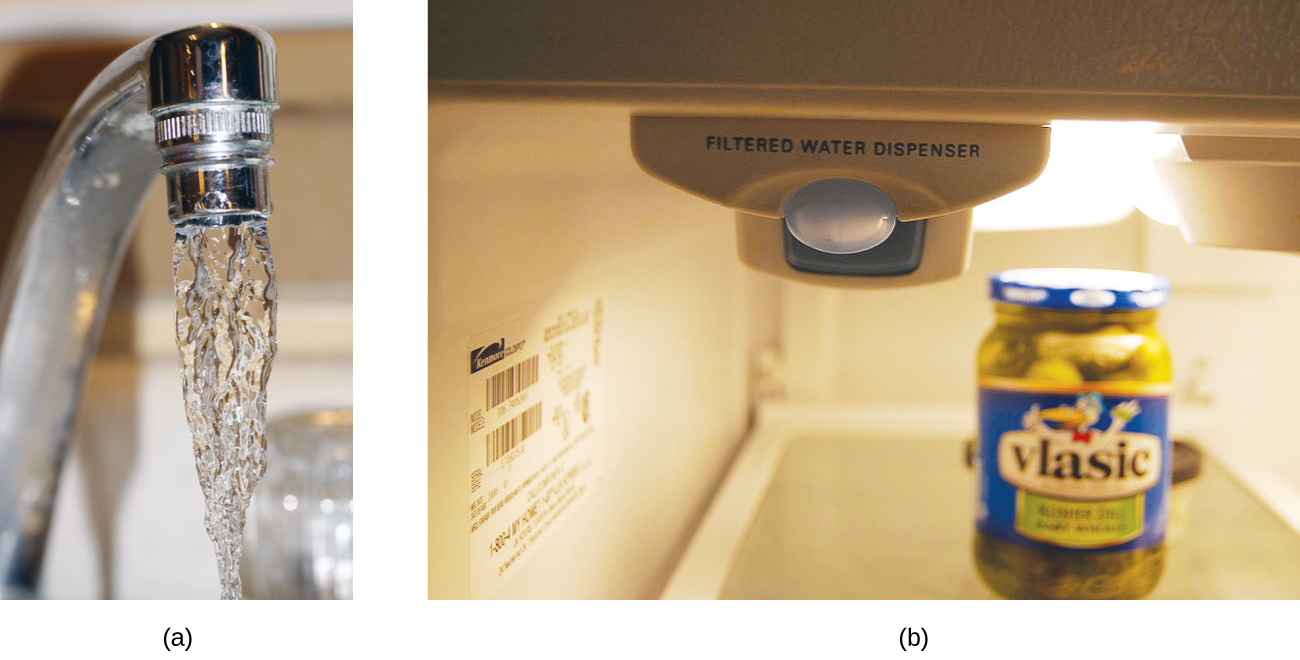| << Chapter < Page | Chapter >> Page > |

Very low solute concentrations are often expressed using appropriately small units such as parts per million (ppm) or parts per billion (ppb) . Like percentage (“part per hundred”) units, ppm and ppb may be defined in terms of masses, volumes, or mixed mass-volume units. There are also ppm and ppb units defined with respect to numbers of atoms and molecules.
The mass-based definitions of ppm and ppb are given here:
Both ppm and ppb are convenient units for reporting the concentrations of pollutants and other trace contaminants in water. Concentrations of these contaminants are typically very low in treated and natural waters, and their levels cannot exceed relatively low concentration thresholds without causing adverse effects on health and wildlife. For example, the EPA has identified the maximum safe level of fluoride ion in tap water to be 4 ppm. Inline water filters are designed to reduce the concentration of fluoride and several other trace-level contaminants in tap water ( [link] ).

The definition of the ppb unit may be used to calculate the requested mass if the mass of the solution is provided. However, only the volume of solution (300 mL) is given, so we must use the density to derive the corresponding mass. We can assume the density of tap water to be roughly the same as that of pure water (~1.00 g/mL), since the concentrations of any dissolved substances should not be very large. Rearranging the equation defining the ppb unit and substituting the given quantities yields:
Finally, convert this mass to the requested unit of micrograms:
9.6 ppm, 9600 ppb
In addition to molarity, a number of other solution concentration units are used in various applications. Percentage concentrations based on the solution components’ masses, volumes, or both are useful for expressing relatively high concentrations, whereas lower concentrations are conveniently expressed using ppm or ppb units. These units are popular in environmental, medical, and other fields where mole-based units such as molarity are not as commonly used.
Consider this question: What mass of a concentrated solution of nitric acid (68.0% HNO 3 by mass) is needed to prepare 400.0 g of a 10.0% solution of HNO 3 by mass?
(a) Outline the steps necessary to answer the question.
(b) Answer the question.
(a) The dilution equation can be used, appropriately modified to accommodate mass-based concentration units:
This equation can be rearranged to isolate mass
1 and the given quantities substituted into this equation.
(b) 58.8 g
What mass of a 4.00% NaOH solution by mass contains 15.0 g of NaOH?
What mass of solid NaOH (97.0% NaOH by mass) is required to prepare 1.00 L of a 10.0% solution of NaOH by mass? The density of the 10.0% solution is 1.109 g/mL.
114 g
What mass of HCl is contained in 45.0 mL of an aqueous HCl solution that has a density of 1.19 g cm –3 and contains 37.21% HCl by mass?
The hardness of water (hardness count) is usually expressed in parts per million (by mass) of CaCO 3 , which is equivalent to milligrams of CaCO 3 per liter of water. What is the molar concentration of Ca 2+ ions in a water sample with a hardness count of 175 mg CaCO 3 /L?
1.75 10 −3 M
The level of mercury in a stream was suspected to be above the minimum considered safe (1 part per billion by weight). An analysis indicated that the concentration was 0.68 parts per billion. Assume a density of 1.0 g/mL and calculate the molarity of mercury in the stream.
In Canada and the United Kingdom, devices that measure blood glucose levels provide a reading in millimoles per liter. If a measurement of 5.3 m M is observed, what is the concentration of glucose (C 6 H 12 O 6 ) in mg/dL?
95 mg/dL
A throat spray is 1.40% by mass phenol, C 6 H 5 OH, in water. If the solution has a density of 0.9956 g/mL, calculate the molarity of the solution.
Copper(I) iodide (CuI) is often added to table salt as a dietary source of iodine. How many moles of CuI are contained in 1.00 lb (454 g) of table salt containing 0.0100% CuI by mass?
2.38 10 −4 mol
A cough syrup contains 5.0% ethyl alcohol, C 2 H 5 OH, by mass. If the density of the solution is 0.9928 g/mL, determine the molarity of the alcohol in the cough syrup.
D5W is a solution used as an intravenous fluid. It is a 5.0% by mass solution of dextrose (C 6 H 12 O 6 ) in water. If the density of D5W is 1.029 g/mL, calculate the molarity of dextrose in the solution.
0.29 mol
Find the molarity of a 40.0% by mass aqueous solution of sulfuric acid, H 2 SO 4 , for which the density is 1.3057 g/mL.

Notification Switch
Would you like to follow the 'Chemistry' conversation and receive update notifications?